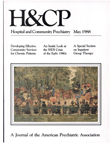A Closed Model of Short-Term Inpatient Group Psychotherapy
Abstract
Cohesiveness, an essential element in successful therapy groups, is difficult to establish and maintain in inpatient settings where group membership is constantly changing. Cohesiveness can be increased by the use of a closed group model, in which all members begin the group on a specified day and remain in the group for a predetermined number ofsessions. Such groups must work through four developmental phases. The first phase, in which group members overidentify with the problems of other members, is followed by a phase characterized by disenchantment with the group. In the third phase members seek to achieve both indepen- dence and intimacy simultaneously, and the final phase involves separation from the group. According to the author, the primary disadvantage of closed ther- apy groups is that they can be used only in certain settings.
Access content
To read the fulltext, please use one of the options below to sign in or purchase access.- Personal login
- Institutional Login
- Sign in via OpenAthens
- Register for access
-
Please login/register if you wish to pair your device and check access availability.
Not a subscriber?
PsychiatryOnline subscription options offer access to the DSM-5 library, books, journals, CME, and patient resources. This all-in-one virtual library provides psychiatrists and mental health professionals with key resources for diagnosis, treatment, research, and professional development.
Need more help? PsychiatryOnline Customer Service may be reached by emailing [email protected] or by calling 800-368-5777 (in the U.S.) or 703-907-7322 (outside the U.S.).



